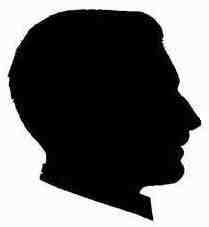
James Gallaway [1052] (-1843) |
James Gallaway [1052]
James Gallaway, along with the Yonges, Hoggs, and Pinkertons arrived in Canada in the early 18th hundreds. James and his wife Agnes arrived in Quebec around 1820 and by 1821 they were living in Hallowell in Upper Canada where James was working as a miller. In 1830, James petitioned for land in King's township - north of Muddy York at Hogg's Hollow, afterwards called York Mills. He petitioned for land again in 1837 at what was then called Pinkerton's Corners, four miles south and two miles east of the village of Cookstown. According to the family records, James and Agnes had thirteen children.
He is buried in the old cemetery at the church on top of the hill at York Mills where many of his pioneer friends are also buried. There is no marker for his grave.
1. Immigration, 1820, Quebec, Canada South. 2. Residence, Between 1821 and 1824, Hallowell, Upper Canada, Canada. 3. Occupation: miller, 1824, Hallowell, Upper Canada, Canada. 4. Land: of 200 acres, Jun 1824, Hallowell, Upper Canada, Canada. He petitioned for the land on 9 Jun 1824. According to the petition, he had never petitioned for land in Canada before. 5. Land, Aug 1830, King Township, York, Home, Canada. Lot 24 in the 8th Concession. The area was also known as Hogg's Hollow. 6. Residence, 10 Aug 1830, West Gwillimbury, Simcoe, Ontario, Canada. 7. Anecdote: James teamed flour into the northern township with oxen, Cir 1832, West Gwillimbury, Simcoe, Upper Canada, Canada. "That flour," said [his son] Mr. Joseph Galloway, "was sold to the settlers at eight or ten dollars per barrel; but it was worth the cost as a week was taken on the round trip, and over a great part of the way the country was solid bush. It was dear flour to the settlers all the same, as some of those who purchased it had earned the necessary money by working in the harvest fields at 'the front' at fifty cents per day. Some were unable to pay the price and, on one occasion, one man went without bread for nearly two weeks." 8. Occupation: miller at the Old Mill on the Humber River, 1836-1837, York Twp., York County, Ontario, Canada. Having learned milling in Ireland before coming to Canada, he applied for and got the position of operator of this stone mill. 9. Land, 10 Feb 1837, West Gwillimbury, Simcoe, Ontario, Canada. The family arrived at Pinkerton's Corners, Concession 11, Lot 6 (located four miles south and two miles east of Cookstown) after they left Hogg's Hollow. James obtained the patent to 200 acres on 10 Feb 1837. James married Agnes Pinkerton [1053] [MRIN: 300] on 10 Sep 1818 in Balleymoney, Antrim, Ulster, Ireland. (Agnes Pinkerton [1053] was born circa 1802 in Ireland, died on 30 Aug 1861 in Nottawasaga, Simcoe, Ontario, Canada and was buried in 1861 in Nottawasaga, Simcoe, Ontario, Canada.)
1. Residence: Hillhead, 10 Sep 1818, Balleymoney, Antrim, Ulster, Ireland.
Married at the Presbyterian Church. Witness: Matthew Pinkerton and Chas. McArthur. |
 Cause of his death was bursting of the mill stone.
Cause of his death was bursting of the mill stone.